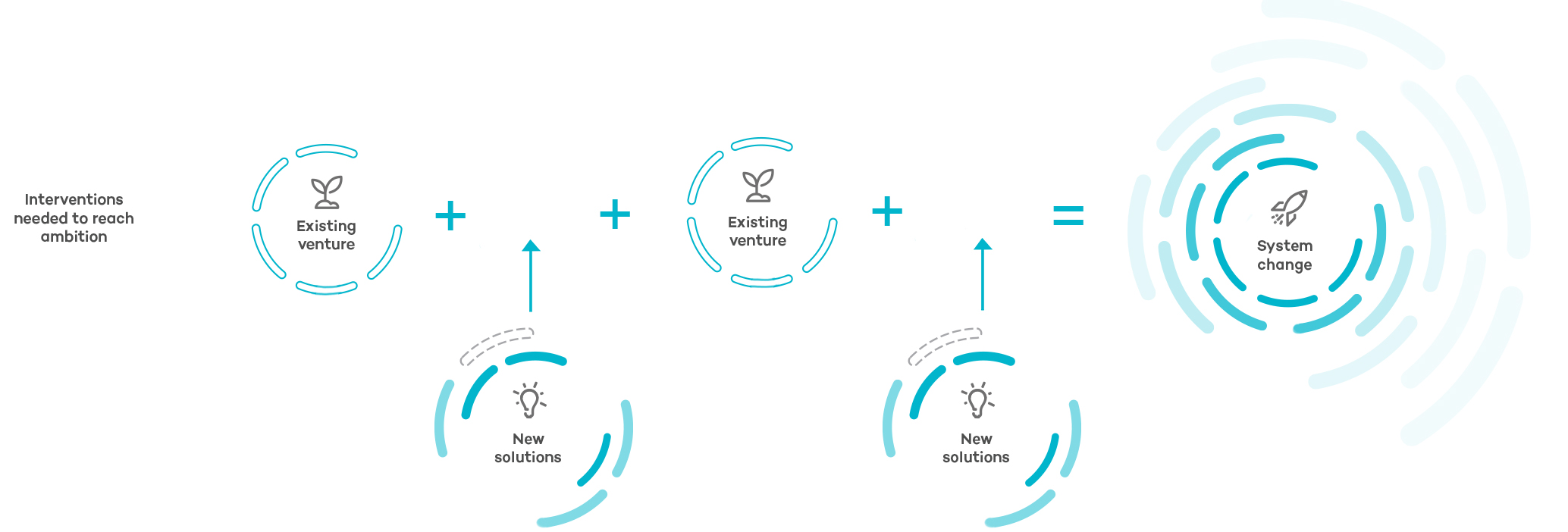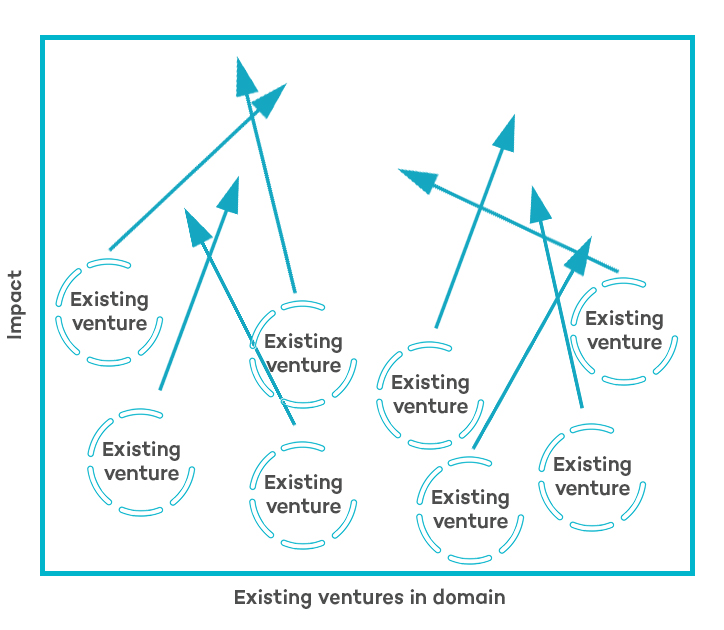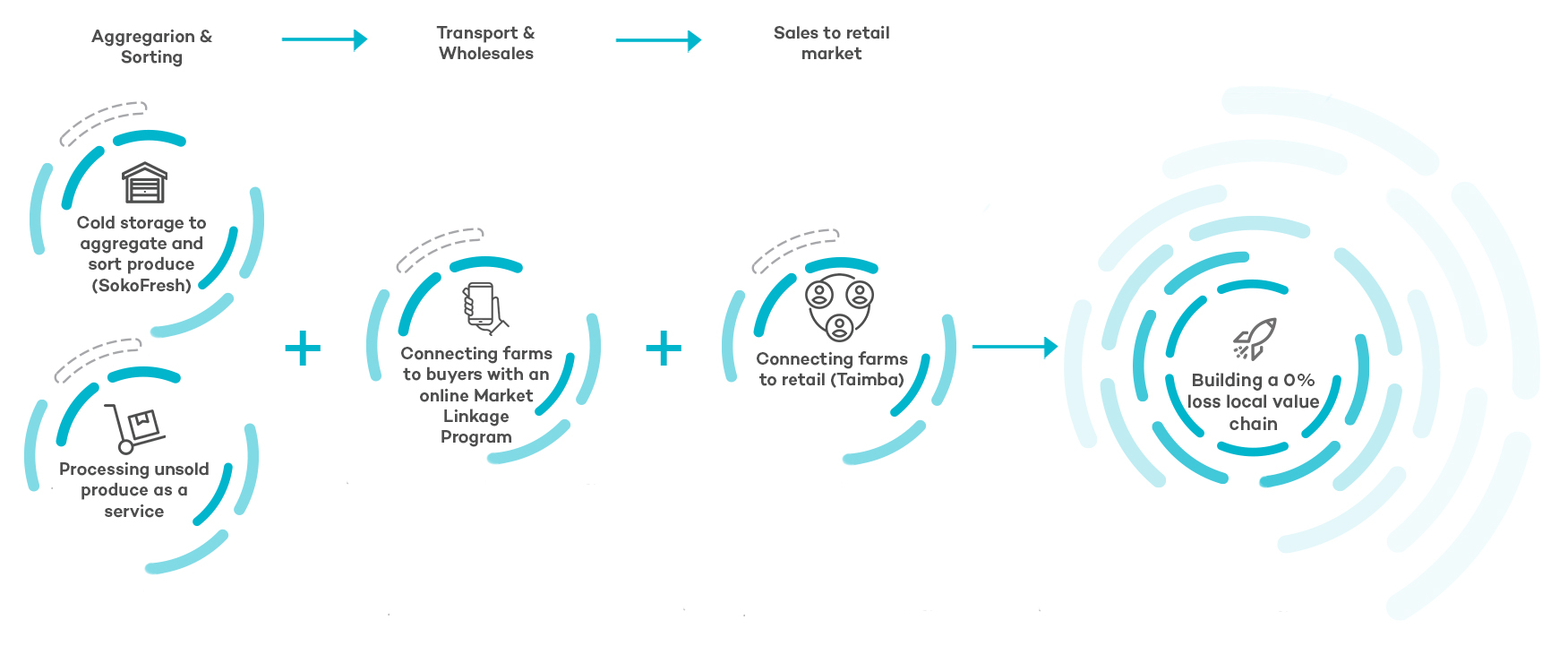Why a systemic approach to impact venturing is vital
Today, the climate and biodiversity crisis presents enormous challenges and at the same time, COVID19 has made evident the profound social flaws and inequalities of our economic system. Impact driven venturing is a critical instrument to tackle these challenges, achieve impact at scale and do it fast. Today impact ventures are more and more demonstrating their viability, and in doing so, they are successfully tapping into global capital markets to sustain and further grow their impact.
Yet, while impact is a fast-emerging global discipline, it is also a fragmented sector in which many individual enterprises take up these large challenges on their own. This results in a scattered group of ventures solving different problems and, whilst this is all well and good, fundamental change is not being achieved. To effectively tackle the profound systemic challenges of our times, a more strategic and systematic approach to impact-driven venture building is needed.
What a systemic approach looks like
Systemic venture building is the method of deliberately building multiple companies that together seek to solve systemic issues. Only once the root cause of a given issue is properly understood, it is possible to identify the leverage points where solutions need to be placed to meaningfully solve the issue. As such, a systemic approach to venture building must always start with an issue analysis and a deep understanding of the most pressing systemic flaws and their local contexts.
From this understanding, a vision with a Theory of Change and set of business solutions can be developed that has the potential to drive fundamental change. This leads to the building of a targeted, strategic pipeline of businesses that solve a given systems issue, rather than a scattershot spread of ventures with standalone impact.


The building of these ventures requires multiple strategies
To realize the goal of systemic change, and build this strategic pipeline of ventures, multiple venture building strategies could and should be employed. Depending on the interventions needed, the following three venture building strategies can be applied:
1. GROW promising local business solutions. This entails the scouting of existing local businesses that can change the flaws in a system. Following this approach, it is crucial to join forces with local entrepreneurs to grow their business and impact system changing scale.
2. REPLICATE business solutions from other countries. By scouting for (proven) business solutions abroad, venture builders can identify opportunities for replication to the country of focus.
3. IDEATE new groundbreaking business models to fill remaining gaps within the overarching intervention strategy.
In all three strategies, partnering with either a local entrepreneur or an on-the-ground team is crucial in ensuring that the solution is strongly adapted to suit its local context.
A case study in systemic venture building – Enviu’s FoodFlow Program
Enviu has been building impact-driven ventures for 17 years. Learning by doing, we have developed a strong methodology for systemic venture building. Our FoodFlow program is a great example of how we put the concept of systemic venture building into practice.
Here is how our creating a strategic pipeline of venture’s works
Confronted by high levels of both food loss and food insecurity in Kenya, the team worked to uncover the structural flaws in the country’s food system. Post-harvest food loss appeared to be a major driver and we detected issues such as:
- Farmers who had a weak link to the market and limited negotiation power
- Many intermediaries in the value chain eating into profit margins
- Seasonality leading to an enormous excess of produce
- Farmers who lacked the opportunity to derive value from their excess produce

Figure 3: Connecting the dots. Multiple ventures cooperating together create a new and impactful value chain. FoodFlow set the ambitious goal of building a showcase 0% loss local chain, to be achieved by ideating and validating interventions that directly tackle these fundamental flaws. This has thus far led to the launch of SokoFresh (cold storage as a service), the validation of SokoLink (smart aggregation and market linkage), the replication of Avomeru (processing at the farm level) and the scaling of Taimba (farm to fork distribution).
Rather than building isolated interventions, FoodFlow is creating a 0% food loss chain by building a strategic set of interventions that complement and strengthen each other. This model will be replicated to multiple crops and geographies, driving a new circular food value chain in Kenya.
Let’s join forces to drive fundamental change, quickly
Today we are faced with some of humanity’s greatest challenges, and we are running out of time to do something about them. Deliberate and systemic venture building is a crucial strategic tool to catalyze systemic change and it must be employed to tackle these challenges head on.
Crucially, this cannot be done alone. If we join forces and build strong partnerships, we can achieve exponentially more impact. And achieve it faster.. Do you recognize within your organization’s domains a large amount of initiatives with positive impact but not driving a fundamental, long-lasting change? Then please reach out, and let’s have a talk about how we could work together and build the solutions that drive us toward a better future.
Contact us at Michiel@enviu.org
